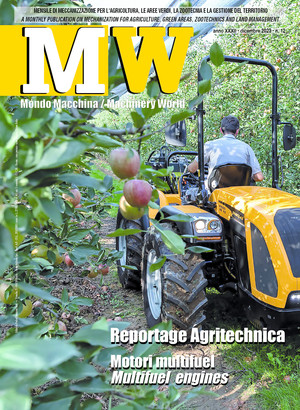
India, a fertile market
The dissemination of mechanical equipment is considered by the Indian government and by the administration of single states as a fundamental element for the development of agriculture. The market, already the largest for tractors, is now geared to growing in quality and a trend towards more powerful tractors
In January 2013 the Minister of Agriculture Sharad Pawar stated that an increase of levels of mechanization in India is necessary to meet the demand for food, in particular cereals, that is estimated to reach 280 million of tons by 2020. In a country in which agriculture still largely depends of seasonal rains, where the size of the workforce available is decreasing and where the population to be fed reached 1.21 billion in 2011, a figure that is estimated will grow by 1% a year, mechanization of the agricultural production system is fundamental: data analysis reveals that there are still areas where an intervention aimed at developing mechanization is still strongly required.
One of the most significant aspects when considering agricultural mechanization in India is the available power per hectare that is, at a national level, 1.66 kW/ha, a very low figure if compared to nations where agriculture is mechanized to a higher degree, from Italy (3 kW/ha) to the United States (6 kW/ha), South Korea (7 kW/ha) and Japan (14 kW/ha). A detailed analysis of the levels of mechanization reveals strong imbalances between states where machinery is used extensively such as Punjab (3.5 kW/ha) and Haryana (2.25 kW/ha) and states where much can still be achieved such as Odisha (0.6 kW/ha), Gujarat (0.6 kW/ha) and Madhya Pradesh (0.8 kW/ha).
Another relevant figure indicates the percentage of machinery and equipment used in agriculture compared to a completely mechanized agricultural production system. In the figure is a mere 35%. Furthermore strong imbalances emerge if we analyze the various operations in detail: while the percentage relative to soil working is 85% (with peaks of 95% in the working of land cultivated for wheat), in the case of sowing and transplanting the percentage is 30% and 25% for harvesting. The operation where mechanization is lacking the most is plant protection with a percentage of only 3% of the whole potential, which then drops to 2% in the cultivation of rice, sugar cane and cotton. The case of corn is exemplary: in fact while the percentage of mechanization of the procedures for working soil for corn crops reaches 90%, the percentage for sowing and transplanting, plant protection and harvesting are respectively 5%, 3% and 5%.
The Indian market does on the other hand have some strong points which make it a desirable outlet for firms that deal in agricultural machinery. First of all India is one of the largest markets in the world for tractors, with sales that exceeded 600,000 units in the fiscal year 2011-2012, sales that, despite an estimated decline of 3% in the year 2012-2013, are expected to continue to rise at a compound annual growth rate of 5 – 8% in the next five years. Furthermore, due to increasing land subdivision (the average size of a plot is in fact 1.16 ha) the market is dominated by tractors in the power range of 40 – 50 hp, though demand for more powerful tractors is growing.
The fragmentation of farmland is also one of the factors behind the ongoing development of contracting and of custom hiring, which for many farmers is the only way to access technologies that would otherwise require an investment they could not afford. These models are furthermore at the basis of various programs for agricultural development implemented by the Indian government, among which the National Mission on Agricultural Extension, currently being tested, that is expected to provide a substantial stimulus to mechanization at a national level. The spread of contract farming is also a result of the reduced size of the plots of land. The practice is implemented by large companies in the food industry and consists in stipulating contracts with hundreds of small farmers whereby the farmers agree to deliver their products to the company in return for remuneration but also machinery, equipment, seeds, fertilizers and all the necessary technical support.
The dimensions of the market make it difficult to assess and provide clear figures for the potential development for the various types of machinery and equipment, though it is possible to say that practically all companies can profit from an outlet in India. The local market is able to deploy almost any type of machinery in large numbers and the firms that intend to do business can profit from a wide range of options for operating in India, from agreements on distribution and technology transfer, to the creation of joint-ventures with local partners. The recent devaluation of the local currency, the rupee, and the relaxation of regulation on technology transfer, in particular on the limit for lump-sum and royalties payments, make the option of collaboration in loco more attractive. The possibility of producing the machinery in India, providing the technology, the know-how and the quality of a brand, allows for substantial savings of costs, creating the conditions for selling the machinery at a competitive price, a necessary condition that is not always possible when transport expenses, customs and accessory expenses must be added to the cost of the machinery.








